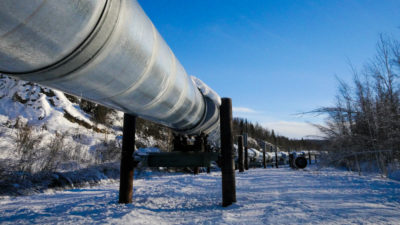Oh, what a difference six weeks makes.
On March 16th West Texas Intermediate oil hit a fresh five-year low, dipping below $43 per barrel. Pundits and market observers everywhere were almost universally bearish, predicting crude would be as low as $20 per barrel. Everything from record-high inventory levels to Middle Eastern politics were presented as reasons why the price of crude was going to stay low for a very long time.
But then something else happened. Crude began to recover, eventually rallying more than 30% in just a few short weeks. As I write this, the price of the commodity is right around $58 per barrel, which is the highest level since December. That’s not what the pundits expected. In fact, it’s the exact opposite of what most folks were saying would happen.
Shares of Canadian Oil Sands Ltd (TSX:COS) have done even better than crude. Since bottoming in March at $8.87 each, shares have gone up nearly 50%, closing on Wednesday at $12.66 each. That’s an awful big move in just six weeks.
Does this big move mean there’s no more upside left in the stock? Let’s take a closer look.
Where oil goes…
At this point, Canadian Oil Sands is basically a levered play on the price of oil.
When you consider its operations, it makes perfect sense. It owns approximately 37% of the Syncrude oil sands project, which upgrades the thick, tar-like bitumen mined into something that very closely resembles light sweet crude. This adds costs to the process, but also enables the company to get a much higher price than its peers—often $20 to $30 per barrel more, depending on the markets.
Costs are the same per barrel, no matter what happens. Sure, pumping more volume through the upgrading process helps, and there are always costs that can be cut, but there’s really only one variable that determines how profitable the operation is, and that’s the price of oil. The exchange rate between Canadian and U.S. dollars also helps, since costs are in local currency and sales are in U.S. dollars.
For 2015 the company has estimated costs will be approximately $45 per barrel, depending on how much fat it can cut from operations. At a sale price of $45 per barrel, it doesn’t take a math genius to realize there’s no profit there, especially after paying capital expenditures. At $60 per barrel, cash from operations should be enough to cover the capex expenses and the recently slashed dividend. There’s a lot more breathing room at $60 oil.
The economics keep on getting better at $65 or $70 oil. Based on 100,000 barrels per day of production and a profit of $5 per barrel, the company is looking at earnings of about $0.40 per share. That’s a lot better than outlook was a few weeks ago.
Where does the price go from here?
There’s a pretty easy way to predict where the stock price will go if oil recovers even further. We can just look at where it traded the last time crude traded at a certain level.
Five years ago, crude spent most of that summer between $70 and $80 per barrel. During that time, shares of Canadian Oil Sands traded between $25 and $28. That’s more than double today’s price.
Of course, things are a little different than they were a few years ago. The cost of production was lower back then, for one. The company also paid a $0.50 per share dividend that year, while it’s currently on pace to deliver just $0.20 per share to owners in 2015.
But there’s enough of a margin of safety to say the stock could go quite a bit higher if oil continues to recover. So, if you’re bullish on oil, Canadian Oil Sands is a good way to play it, even after already moving up some 50%.







